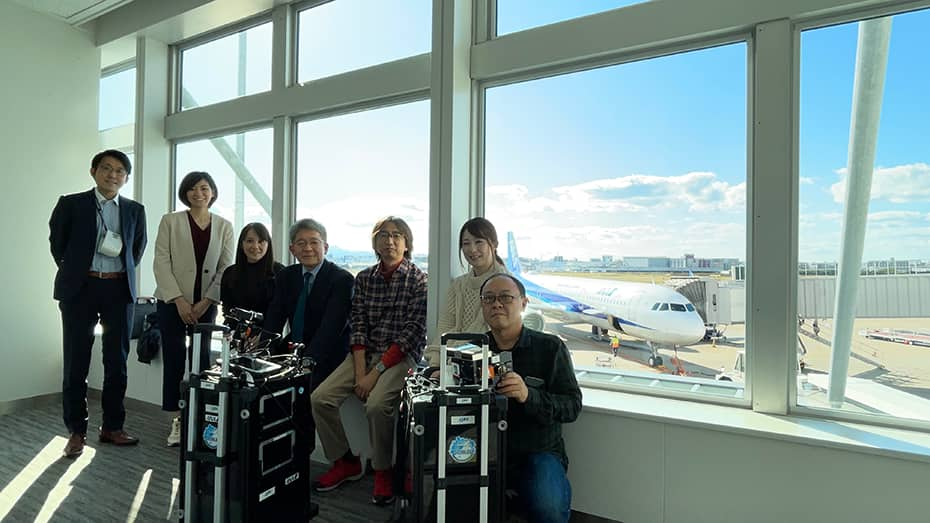2021/11/25
Observing the Concentration Distribution of Greenhouse Gases from Space
The increase of greenhouse gases such as carbon dioxide (CO₂) and nitrogen dioxide (NO₂) in the atmosphere, which are invisible to the human eye, is causing global warming. Since 2009, the Japan Aerospace Exploration Agency (JAXA) which carries out basic research, development, and utilization in the field of aerospace, has been monitoring the increase of greenhouse gases on the Earth using the Greenhouse Gases Observing Satellite "IBUKI" (GOSAT).
The following figure shows that the concentration of CO₂, one of the greenhouse gases, in the atmosphere captured by the IBUKI has been increasing since 2009.

CO₂ concentration observed by IBUKI (excerpt)
In order to consider measures to reduce greenhouse gas emissions, it is necessary to correctly understand where greenhouse gases are being emitted and where they are being absorbed. JAXA aims to reduce greenhouse gas emissions using data obtained by observing the composition of the atmosphere from space.
In 2018, Ms. Matsumoto from ANA Holdings had a conversation with a person who had been seconded to ANA from JAXA. From the conversation, she noticed that "Airplanes fly at a lower altitude than satellites, so if we can put the sensors (observation equipment) on airplanes, we may be able to get more detailed data than satellites." In order to contribute to the analysis of greenhouse gases using airplanes, JAXA and ANA teamed up to launch the GOBLEU Project*1, a demonstration experiment to observe the distribution of atmospheric components on the earth's surface (remote sensing) from satellites and passenger planes.

- *1 GOBLEU : abbreviation of Greenhouse gas Observations of Biospheric and Local Emissions from the Upper sky

Members from JAXA, and Ms. Matsumoto (Third from left) and Mr. Miyashita (Left most) from ANA Holdings Space Business Development Team
A Joint Research by ANA × JAXA, the "GOBLEU Project"
In the "GOBLEU Project," a joint research project between ANA and JAXA, JAXA's observation equipment, which were miniaturized by applying the observation technology of "IBUKI," is brought on board ANA flights to observe the detailed concentration distribution of atmospheric components (CO₂, NO₂, etc.) along the flight path.

Observation of atmospheric components using observation equipment on board an ANA flight.
Specifically, the observation equipment catches the reflected sunlight from the ground. If there are greenhouse gases in the atmosphere, some of the light is absorbed before the equipment catches it, weakening the light by the time it reaches the equipment. By analyzing the amount of light absorbed, the system is able to determine the amount of greenhouse gases in the atmosphere.

Illustration of how the observation equipment on the airplane catches the reflected sunlight from the ground.
The satellite "IBUKI" measures the concentration of atmospheric components by observing the amount of light reflected on the ground from space at an altitude of about 666 km. However, in this joint research, the observation equipment will be carried on ANA's airplane and observed from a height of about 10 km above the ground, which will enable us to obtain higher resolution and more detailed data.

Figure showing the difference between observations from a satellite and using ANA's airplane.
By combining data acquired on board ANA flights by JAXA's observation equipments and data acquired in space by satellites such as IBUKI, it is now possible to analyze greenhouse gas emissions from human activities in urban areas by source, such as transportation and industry, which had been difficult to determine using satellites alone.
Solving Social Problems
In the future, the research results will be used to study measures to reduce greenhouse gas emissions in urban areas, which are thought to account for most of the greenhouse gas emissions associated with human activities. In addition, we will provide data that will be useful for evaluating the effects of greenhouse gas reduction, and aim to contribute to the Paris Agreement, which obliges countries around the world to take measures to reduce greenhouse gas emissions.
Through the joint research, JAXA and the ANA Group will contribute to solving global social issues including environmental problems, from space and the sky, and work toward the realization of a sustainable society.
Short Video of the GOBLEU Project
Here's a peek at the GOBLEU project on April 7, 2021 on ANA249 from Haneda to Fukuoka!
This is a one-minute video showing the GOBLEU project held on April 7, 2021, on ANA249 from Haneda to Fukuoka. In the video, seven project members from JAXA and ANA boarded an ANA airplane from the domestic terminal of Haneda Airport with observation instruments. Then, they observed atmospheric components using the instruments from the cabin window in the sky. Finally, a group photo of the seven project members is shown.
For more information on the project, please read the ANA × JAXA joint research "GOBLEU Project" in the second paragraph of the article.
- * In order to conduct this project, the observation equipment brought onboard was checked in advance and special permission was obtained for the observation.
Click here for the website and X of the ANA space commercialization project.
ANA SPACE PROJECT HP: https://www.ana-spaceproject.com/(Japanese page)
X: https://twitter.com/ANA_SPACE_PRJ(Japanese page)





